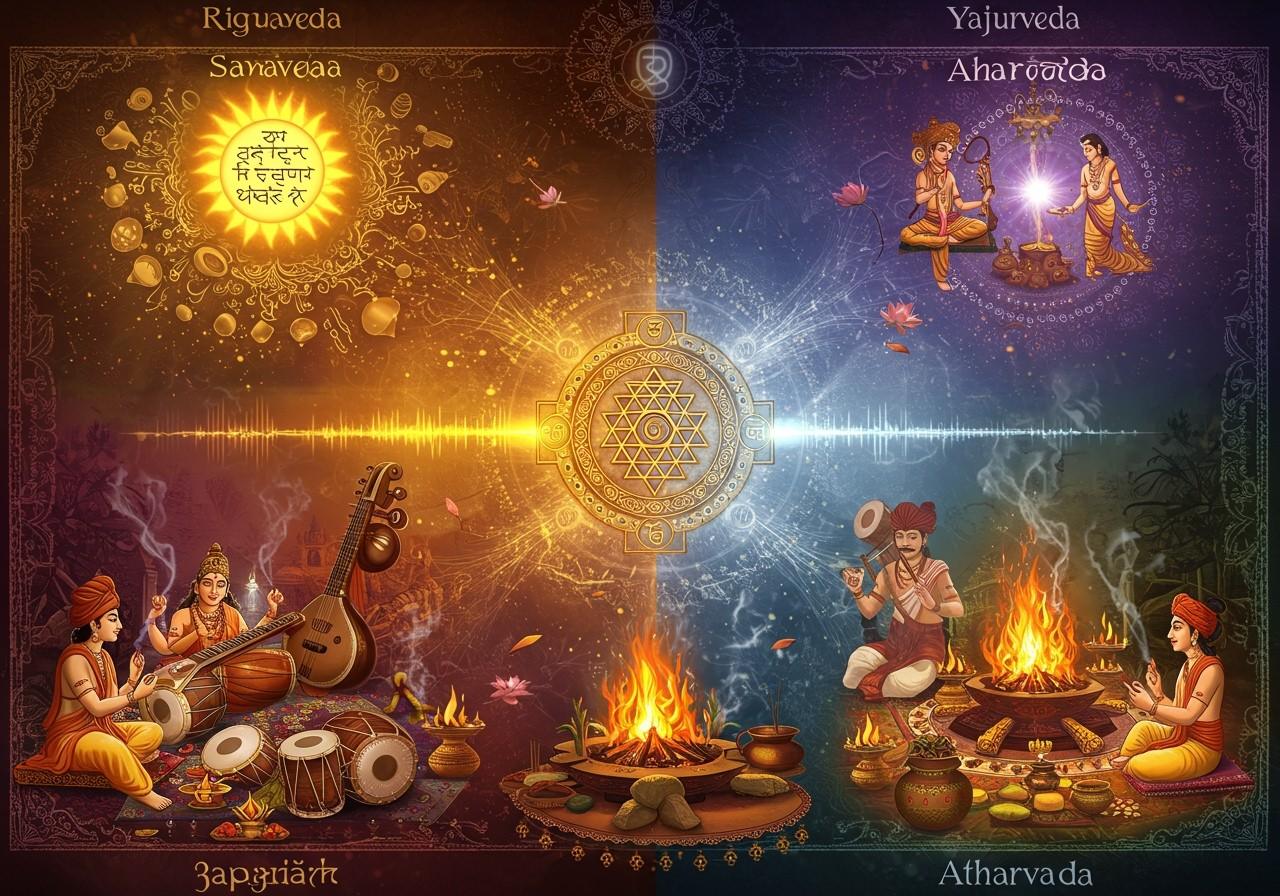
The Vedas, ancient sacred texts, hold immense significance in Hindu tradition, serving as foundational scriptures for Indian culture and spirituality. These texts, namely the Rigveda, Samaveda, Yajurveda, and Atharvaveda, offer profound insights into the Vedic religion, which forms the basis of Hinduism. Each Veda possesses unique characteristics and themes, contributing to a rich tapestry of spiritual knowledge and ritual practices.
Overview of the Vedas
The four Vedas, each with its distinct focus, comprise a comprehensive collection of hymns, chants, rituals, and philosophical concepts. They are:
- Rigveda: The oldest Veda, primarily containing hymns dedicated to various deities, offering praises and invocations.
- Samaveda: Known as the Veda of melodies and chants, it draws heavily from the Rigveda, setting its hymns to music for liturgical purposes.
- Yajurveda: This Veda emphasizes sacrificial rituals and proper conduct, providing prose mantras and formulas for ceremonies.
- Atharvaveda: The youngest Veda, it encompasses a diverse range of topics, including spells, incantations, healing rituals, and practical everyday matters.
Delving into the Differences and Similarities
Rigveda and Yajurveda
The Rigveda, with its 10 Mandalas (books), focuses on hymns praising deities like Agni and Indra. The Yajurveda, in its Shukla (White) and Krishna (Black) recensions, provides prose mantras for rituals. While the Rigveda emphasizes cosmology and mythology, the Yajurveda focuses on ritualistic procedures. Both guide rituals but with different approaches. For instance, both address Agni, but the Rigveda praises Agni’s cosmic role, while the Yajurveda details Agni-related rituals.
Rigveda and Samaveda
The Samaveda derives its chants from Rigvedic hymns, particularly for the Soma sacrifice. While the Rigveda emphasizes the content and meaning of hymns, the Samaveda focuses on their melodic structure, creating a spiritual atmosphere. This musical adaptation is crucial for Indian classical music. For example, a Rigvedic hymn praising Indra is transformed into a melodic chant in the Samaveda.
Rigveda and Atharvaveda
The Atharvaveda, with its practical and magical content, contrasts with the Rigveda’s spiritual hymns. While the Rigveda focuses on deities and cosmology, the Atharvaveda addresses practical concerns like healing, protection, and daily life. It offers spells, charms, and rituals for various purposes.
Poojn.in: Your Gateway to Vedic Traditions
Poojn.in, India’s leading cultural goods and services store, offers a wide range of products to support your exploration and practice of Vedic traditions. Whether you’re a seasoned scholar or a beginner, we have everything you need.
- Authentic Vedic Texts: Explore our collection of Vedic scriptures, including the Rigveda, Samaveda, Yajurveda, and Atharvaveda, available in Sanskrit with translations. Learn more about the Vedas and their practical application in modern life.
- Ritual Items: Find traditional copper and brass items, pure cotton vastras (clothes), wooden accessories, and specially prepared ritual ingredients for your Vedic ceremonies. Browse our selection of ritual items, including paddy seeds for puja.
- Expert Guidance: Our team is available to assist you in choosing the right products for your specific Vedic practices and rituals. Discover the rich diversity and traditions of Hinduism.
Visit poojn.in today and embark on a journey of spiritual discovery.
Conclusion
The four Vedas, each with its unique contributions, form the bedrock of Hindu tradition. The Rigveda’s hymns, the Yajurveda’s ritualistic formulas, the Samaveda’s melodic chants, and the Atharvaveda’s practical applications offer a holistic approach to spirituality and daily life. Understanding these differences and similarities enriches our appreciation of the Vedas’ profound wisdom.


